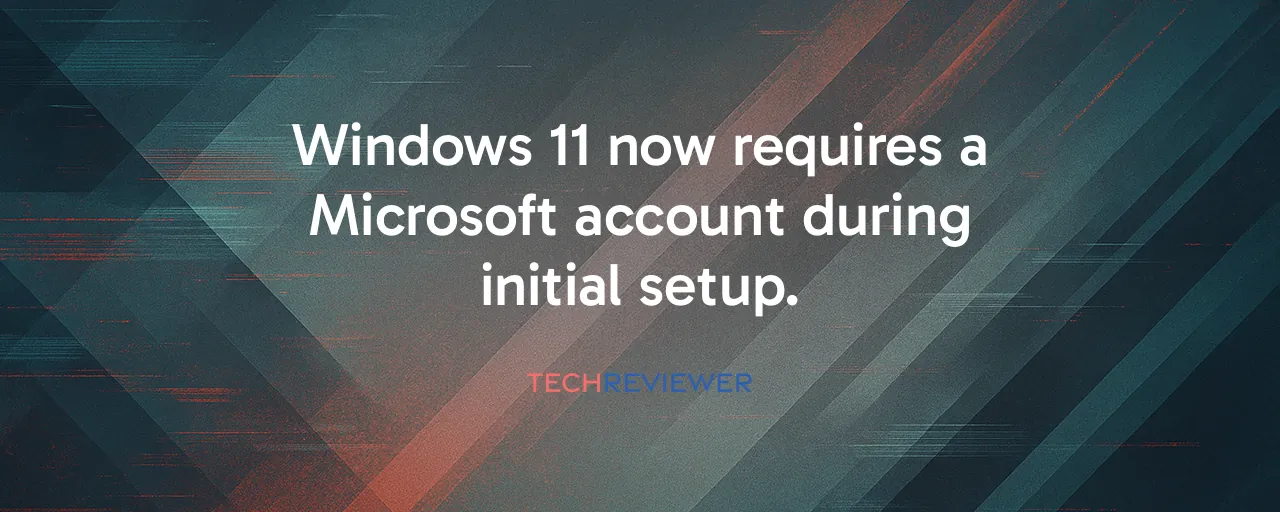A Shift in Windows Setup
Setting up a new Windows 11 PC used to offer a choice: sign in with a Microsoft account for cloud perks or go old-school with a local account for privacy and control. That choice vanished in October 2025. Microsoft now requires every user to connect to the internet and sign into a Microsoft account during the initial setup, known as the Out-of-Box Experience. The company blocked workarounds like the bypassnro command, once a go-to for power users, and a newer trick using ms-cxh:localonly, ensuring no one skips the cloud step. Amanda Langowski, who leads the Windows Insider Program, explained that these workarounds skipped vital setup screens, leaving devices half-configured and less secure. Yet, for many, this feels like a loss of ownership over their own hardware.
This change, rolling out in Windows Insider builds and expected to hit all users soon, reflects a broader push toward cloud-based computing. Microsoft argues it strengthens security, with features like BitLocker encryption key backups tied to your account. But the move has sparked debate. Some users embrace the seamless syncing of settings across devices, while others see it as a step too far, tying basic PC use to a corporate ecosystem. The question is whether this policy prioritizes user convenience or Microsoft's business interests.
Why Microsoft Wants Your Account
Microsoft's reasoning centers on security and integration. Signing in with a Microsoft account during setup ensures your BitLocker encryption keys are stored in the cloud, protecting data if your device fails or gets stolen. Without this, Microsoft's data shows users risk permanent data loss if they misplace local recovery keys. The account also enables Windows Hello for biometric logins, automatic security updates, and syncing of files through OneDrive. For Microsoft, these features make devices more reliable and easier to troubleshoot remotely. Plus, accounts tie into their growing ecosystem, from Xbox to Microsoft 365, where 82.5 million subscribers already pay for services like OneDrive storage.
On top of that, Microsoft points to consistency. Their telemetry suggests users with accounts get updates faster and face fewer password reset issues compared to local account holders. The cloud model aligns with industry trends, with Apple's macOS pushing Apple IDs and Google's ChromeOS demanding Google accounts. With Windows holding 70.21% of the global desktop market in 2025, Microsoft sees this as a way to streamline experiences and compete with tightly integrated ecosystems like Apple's. But the benefits come with trade-offs, and not everyone's sold on the cloud-first vision.
The Pushback From Users and Experts
For many users, the mandatory account feels like a privacy overreach. Creating a Microsoft account requires an email address and opens the door to telemetry collection, tracking everything from app usage to system diagnostics. Privacy researchers warn this builds detailed user profiles, valuable for analytics or advertising, with little opt-out choice. Users in regions with spotty internet, like rural areas or developing markets, face barriers to even starting their PCs. Others, like IT administrators managing air-gapped systems for security, find the policy disrupts their workflows. Even everyday users setting up a family computer now deal with extra steps, like creating throwaway accounts or juggling credentials across devices.
The backlash isn't just anecdotal. Privacy groups argue the policy skirts GDPR rules in Europe, where consent for data collection must be freely given, not a condition for using a purchased product. Some legal experts question if Microsoft's dominance, with Windows powering 63.2% of U.S. desktops, lets them push services like OneDrive unfairly. Meanwhile, power users and small businesses without enterprise tools struggle. The policy complicates computer donations, classroom setups, and retail demos, where local accounts were simpler. As resistance grows, Linux adoption has hit 5.03% in the U.S., partly driven by users seeking alternatives like Ubuntu or Fedora.
Real-World Impacts: Healthcare and Denmark's Shift
The policy's effects are clear in specific cases. In healthcare, where HIPAA rules demand strict data privacy, IT teams face headaches. Hospitals often use air-gapped networks to protect patient data, but Windows 11's account requirement forces reliance on cloud-connected setups or costly enterprise workarounds. One hospital reported delays in deploying new workstations because standard installation methods no longer worked, requiring manual account creation and removal. This friction risks slowing critical updates in environments where security is paramount, showing how a one-size-fits-all policy can stumble in specialized settings.
Across the Atlantic, Denmark's government offers another lesson. In 2025, they began shifting some IT systems to Linux, citing cost and control. Microsoft's account mandate played a role, as officials prioritized digital sovereignty over cloud dependency. The move highlights a growing trend: users frustrated with Windows' restrictions are exploring open-source options. Linux's U.S. market share climbed to 5.38% in 2025, and devices like the Steam Deck, running Linux-based SteamOS, show alternatives can thrive when Windows pushes too hard. These cases suggest Microsoft's policy could drive niche but significant shifts away from its ecosystem.
What's Next for Windows Users
Microsoft's trajectory points to deeper cloud integration. Features like Copilot AI and advanced security tools already rely on accounts, and future updates may close remaining loopholes, like post-setup local account creation. Yet, the company faces pressure. GDPR enforcement could force clearer consent options in Europe, while user pushback fuels tools like Rufus, which tweaks installation media to bypass restrictions. For now, enterprise users with Autopilot or domain setups have workarounds, but regular consumers face a tougher choice: adapt to Microsoft's cloud or seek alternatives.
The debate boils down to control versus convenience. Microsoft's vision of a connected, secure ecosystem has real perks, but it risks alienating users who value autonomy or lack reliable internet. As Windows 10's support ends in 2025, affecting 400 million devices, many will face this choice during upgrades. The rise of Linux and tools sidestepping Microsoft's rules shows a community fighting for options. Whether Microsoft bends to criticism or doubles down will shape not just Windows 11's future but how we define ownership in the digital age.
